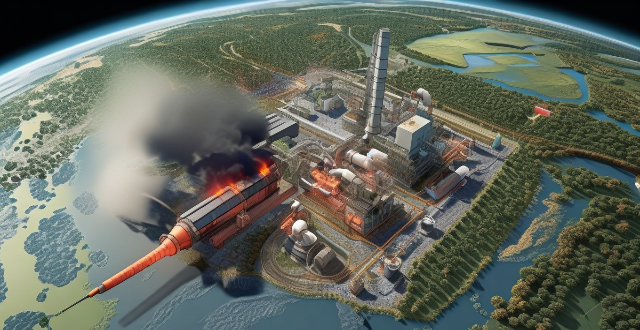Greenhouse gas emissions, primarily carbon dioxide (Greenhouse gas emissions, primarily carbon dioxide (e (CH4), nitrous oxide (N2O), and fluorinated gases, play a crucial role in the phenomenon of global warming. These gases trap heat within the Earth's atmosphere, leading to an increase in the planet's average temperature. The greenhouse effect is a natural process where certain gases in the Earth's atmosphere trap energy from the Sun. However, excessive amounts of greenhouse gases due to human activities are causing this natural process to become unbalanced, resulting in global warming. The primary sources of these emissions include fossil fuel burning, deforestation, industrial processes, agriculture, and waste management. The increase in greenhouse gas concentrations leads to more heat being trapped within the Earth's atmosphere, causing a range of environmental impacts including melting ice caps and glaciers, extreme weather events, ocean acidification, and habitat loss. To combat the effects of greenhouse gas emissions and global warming, various strategies are being implemented, including renewable energy, energy efficiency, carbon capture and storage, reforestation, and sustainable agriculture.

The Contribution of Greenhouse Gas Emissions to Global Warming
Greenhouse gas emissions play a crucial role in the phenomenon of global warming. These gases, primarily carbon dioxide (CO2), methane (CH4), nitrous oxide (N2O), and fluorinated gases, trap heat within the Earth's atmosphere, leading to an increase in the planet's average temperature. This process is often referred to as the "greenhouse effect," which is essential for maintaining the Earth's temperature suitable for life. However, excessive amounts of greenhouse gases due to human activities are causing this natural process to become unbalanced, resulting in global warming.
The Greenhouse Effect
The greenhouse effect is a natural process where certain gases in the Earth's atmosphere trap energy from the Sun. Without these gases, the Earth would be too cold to support most life as we know it. Here's how it works:
- Solar radiation reaches the Earth's surface and is absorbed, warming the planet.
- The warmed surface then emits infrared radiation (heat).
- Greenhouse gases in the atmosphere absorb some of this infrared radiation, preventing it from escaping back into space.
- The atmosphere then re-emits some of this absorbed energy back towards the Earth's surface, keeping the planet warmer than it would be without these gases.
Anthropogenic Greenhouse Gas Emissions
Human activities have significantly increased the concentration of greenhouse gases in the atmosphere, exacerbating the natural greenhouse effect. The primary sources of these emissions include:
- Fossil Fuel Burning: The combustion of coal, oil, and natural gas for energy production releases large amounts of CO2.
- Deforestation: Trees absorb CO2 during photosynthesis. Clearing land for agriculture or urban development reduces this absorption capacity.
- Industrial Processes: Some industries produce N2O and fluorinated gases as byproducts.
- Agriculture: Livestock farming and rice paddies are significant sources of CH4.
- Waste Management: Landfills produce CH4 as organic waste decomposes.
Impact on Global Temperatures
The increase in greenhouse gas concentrations leads to more heat being trapped within the Earth's atmosphere. As a result, global temperatures rise, causing a range of environmental impacts including:
- Melting Ice Caps and Glaciers: Rising temperatures cause ice to melt, contributing to rising sea levels.
- Extreme Weather Events: Changes in weather patterns can lead to more frequent and severe storms, droughts, and heatwaves.
- Ocean Acidification: More CO2 in the atmosphere dissolves into oceans, making them more acidic, which harms marine ecosystems.
- Habitat Loss: Warmer temperatures can alter ecosystems, affecting wildlife habitats and biodiversity.
Mitigation Efforts
To combat the effects of greenhouse gas emissions and global warming, various strategies are being implemented:
- Renewable Energy: Shifting from fossil fuels to renewable sources like wind and solar power.
- Energy Efficiency: Improving efficiency in buildings, transportation, and industry to reduce energy demand.
- Carbon Capture and Storage (CCS): Technologies that capture CO2 emissions from power plants and other industrial processes before they reach the atmosphere.
- Reforestation: Planting new forests and protecting existing ones to increase CO2 absorption.
- Sustainable Agriculture: Practices that reduce CH4 emissions from livestock and rice cultivation.
In conclusion, while greenhouse gases play a vital role in maintaining Earth's habitability, the excessive amounts produced by human activities are leading to global warming at an alarming rate. Addressing this issue requires collective action across national boundaries and sectors to implement sustainable practices and reduce our carbon footprint.